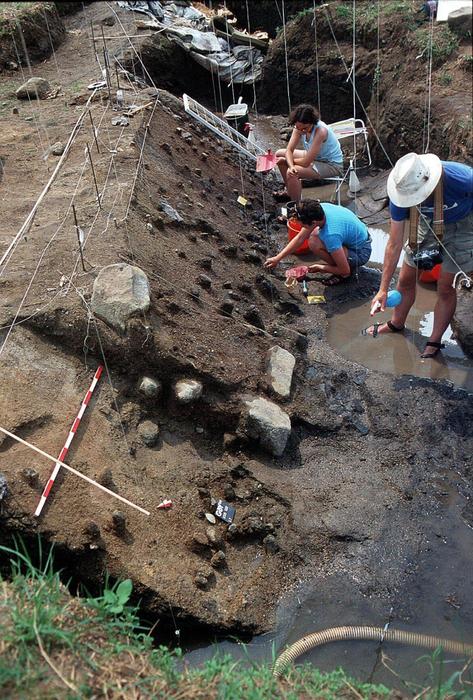Starch Traces on Stone Tools Push Back Evidence of Hominid Plant Prep by 400,000 Years
Sometimes its good not to wash the dishes. Food preparation tools recovered from an Israel archeological excavation that started in 1989 have pushed back evidence of ancient hominid plant processing by about 400,000 years all because they werent cleaned. Starch residue on flat basalt anvils and small, round pounding rocks also add grist to the argument that the Paleo Diet included heavy portions of plants, rather than the meat-dominant version many people have now adopted as a weight-loss strategy. The paper detailing these findings was recently published in PNAS.Rethinking Ancient DietsThe findings were possible because Naama Goren-Inbar, a professor at The Hebrew University of Jerusalem, had preserved some items found in the decade-long dig near now-drained northern Hula Lake south of the Jordan River, without cleaning them. Archeologists often wash such objects to photograph and preserve them.But in this case, the dirty dishes were a gift to Hadar Ahituv for which he is grateful; the unwashed stone tools provided the backbone of his dissertation as well as this potentially paradigm-shifting paper in PNAS. It was so amazing for me to get from her the materials, says Ahituv, now an archeology professor at Haifa University.The tools differed from those collected from other hominids in several ways. First, they were made of basalt, rather than flint a standard material for chopping tools such as axe heads from that same era. Then there was the shape which seemed best suiting to grinding and pulverizing plants, rather than cutting meat. These tool types are not common in other sites, says Ahituv.This Significance of StarchAnd, finally, they contained starch residue. Its presence is significant, because, unlike pollen, starch is generally not found in the soil in which the items were buried.Starch remnants on the tools indicates crushing or grinding providing evidence that the early hominids used the tools akin to a Stone-Age Cuisinart. Archeologists had previously found what they call microbotanicals on the Israel site tiny evidence of acorns, seeds, and fruits from hundreds of thousands of years ago. But no one could point out direct evidence of how these plants could have been processed, says Ahituv.Culinary SophisticationThere were other clues that indicated the sites inhabitants culinary expertise or, at least, the ability to adapt. Analysis showed that the processed plants came from a variety of environments, and likely from several seasons. They found evidence of wheat and barley seeds, likely from spring and summer. But they also detected traces of acorns, likely from fall and winter. Remnants of water chestnuts and the ground roots of water lilies also indicate that the hominids didnt limit their gleaning to land.Finally, they found evidence that some starches were damaged by heat. That, of course, indicates cooking.This work further complicates our understanding of what the Paleo Diet was historically. And, perhaps it might persuade contemporary people who follow it to either consider renaming it, or adding fruit, vegetables, and carbs to the mix.Article SourcesOur writers at Discovermagazine.com use peer-reviewed studies and high-quality sources for our articles, and our editors review for scientific accuracy and editorial standards. Review the sources used below for this article:Before joining Discover Magazine, Paul Smaglik spent over 20 years as a science journalist, specializing in U.S. life science policy and global scientific career issues. He began his career in newspapers, but switched to scientific magazines. His work has appeared in publications including Science News, Science, Nature, and Scientific American.


